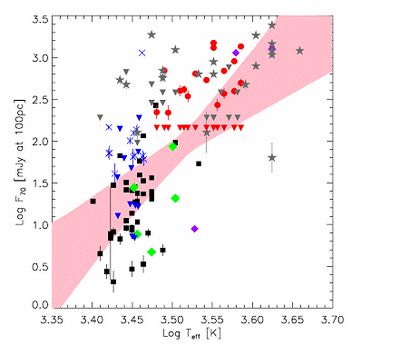Brown dwarfs are one kind of substellar objects. Unlike main-sequence stars, their masses are too low to sustain hydrogen-fusion reactions in their cores. How brown dwarfs and very low-mass stars form is an interesting question in the field of star formation and still remains a subject of debate although several theories have been proposed, for instance, a scaled down version of star formation processes and ejection of the stellar embryo. The disk properties play a crucial role in understanding their formation. We conducted Herschel/PACS observations of five very low-mass stars or brown dwarfs located in the TW Hya association. Our observations, combined with previous photometry from 2MASS, WISE, and SCUBA-2, enabled us to construct spectral energy distributions with extended wavelength coverage. Using sophisticated radiative transfer models, we analyzed the observed spectral energy distributions of the five detected objects and evaluated the constraints on the disk properties via the Bayesian inference method. The modeling suggests that disks around low-mass stars and brown dwarfs are generally flatter than their higher mass counterparts, but the range of disk mass extends to well below the value found in T Tauri stars, and the disk scale heights are comparable in both groups. Moreover, we discuss the dependence of disk properties on their host stellar parameters and find a significant correlation between the Herschel far-IR fluxes and the stellar effective temperatures, probably indicating that the scaling between the stellar and disk masses (i.e., Mdisk ∝ Mstar) observed mainly in low-mass stars may extend down to the brown dwarf regime, see Figure 1. The work by Yao Liu (PMO), Gregory J. Herczeg, Munan Gong, Katelyn N. Allers and et al. has been accepted for publication in Astronomy & Astrophysics, available at http://arxiv.org/abs/1411.1858. 
Figure 1: Fluxes at Herschel 70 micron as a function of the stellar temperature. Data points are from our program and the literature. The shaded region marks 95% confidence intervals on the linear correlation, derived from a Bayesian linear regression analysis that takes the errors and upper limits of measurements into account. |
